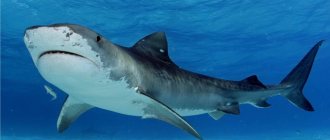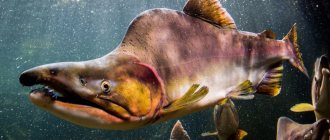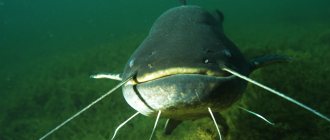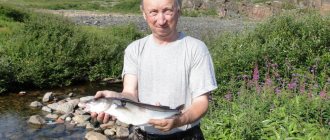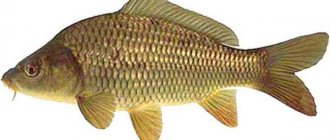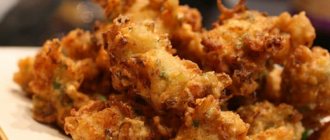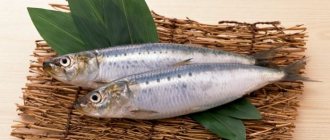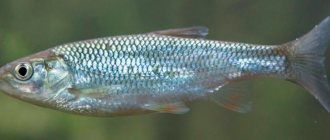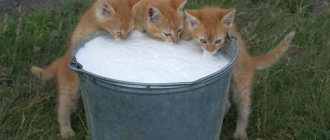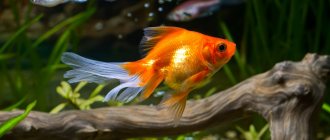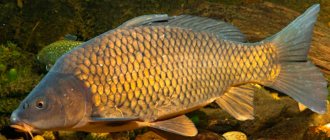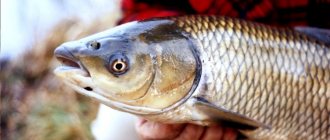This inhabitant of freshwater bodies was once brought to the USSR from China, and since then its population in Russia has increased many times over. Silver carp is valued both for its nutritional value and for its ability to clear water sources of blooms using a unique gill apparatus and make them transparent. And it got its name because of the unusual structure of the head.
Silver carp, an inhabitant of freshwater bodies, was once brought to the USSR from China
Habitat
This species of carp prefers still waters of lakes or slow-flowing rivers. The bottom is clayey and silted in places. Silted areas are suitable for winter hibernation of fish. They love shelter - snags, holes, ledges. Lakes with a flat, hard bottom and perfectly clear water are not suitable for these fish. In the lower reaches of Black Sea rivers it can be found in brackish waters. Tolerates well in ponds.
For mirror carp, it is important to have rich vegetation in the reservoir and abundant animal food, as well as sufficient oxygen content in the water. Due to their rapid growth, carp need a lot of oxygen. Therefore, they live in shallow waters. At depth and in the middle layers of water, the oxygen concentration is lower and insufficient for carp. They prefer to swim and feed in coastal areas near the bottom, which are richer in food resources, oxygen, and natural shelters.
Features of the catch
It is recommended to catch silver carp before or after the spawning period. If there is a sufficient amount of food in the reservoir, the fish will not respond to any bait, and fishing will be unsuccessful.
At other times, in order to catch silver carp, you will need the following gear:
It is better to catch silver carp before or after spawning
As bait you can use pieces of young algae, green peas, fresh cucumber or special technoplankton. In some cases, the fish swallows the hook even without any bait.
In some cases, while fishing, the fish swallows the hook without any attachment
Nutrition
The mirror carp, like its ancestor, is omnivorous. And gluttonous. Because it gains weight quickly. The diet largely depends on the time of year. From early spring to early summer, the fish feed on plants and the eggs of frogs or the eggs of other fish that spawn in cool waters in the spring. Pondweed, cattail, young shoots of reeds, egg capsule, duckweed and any other freshwater plants are perfect for this variety of carp. This fish can filter water through its gills and collect the smallest crumbs of food that are always in the water. They also do not refuse cereals, fruits and berries. With the onset of warmer weather, carp gradually increases the dose of protein food in the diet. Fallen dragonflies, midges, aquatic insects, worms, snails, caviar, leeches, crayfish, mollusks, pond snails - everything is suitable for food. But he does not refuse plant foods. In autumn, carp stores fat and protein for hibernation. Therefore, it completely switches to insects and invertebrates. In winter, like ordinary carp, they look for shelter, lie down in holes and stop feeding until the first warmth in spring.
The fry begin to feed on mosquito larvae. Then they begin to look for small benthic organisms. As the fish grow, their diet expands: everything that the fry can swallow is eaten.
Appearance and structural features
Distinctive features compared to the wild ancestor are a fuller abdomen, a tall and rounded body. The body is elongated and slightly “humpbacked”, so the head is “lower” compared to the body, although it looks quite large. The lips are thick and fleshy, there are two long and two short whiskers. A special feature of cyprinids is their ventricular intestinal tract, which requires almost constant nutrition from the fish. The mirror variety grows larger than the carp and gains weight faster.
The tightly fitting, very large and shiny scales actually resemble small mirrors. The arrangement of the scales is very uneven and individual - the sides are almost bare and leathery. The color of the scales is usually pearly golden with black, less often silver is found, and very rarely brownish. The fins have fewer rays than the wild ancestor and are more rounded in shape. There is no need to confuse a mirror and a leather carp - they are different.
Colour: Dark upperparts, usually dark green, brown or almost black. The abdomen and lower part of the body acquire a golden or dark yellow color. The fins are usually brown, but can also be dark yellow. The color of the mirror carp is influenced by the characteristics of the reservoir and its habitat: lighting, the presence of floating plants and the color of the bottom. The fish adapts to its surrounding conditions.
By one year, the carp reaches a weight of 1 kg, by two years - 3 kg. Quite often there are specimens from 5 to 12 kg and from 40 to 80 cm in length. But mirrors can reach 20 and 30 kg and more than a meter in length. The record copy was recorded in Hungary - 45 kg. They talk about the capture of even more massive specimens. Theoretically, carps can live 50 years. But after 7-8 years, carps grow very slowly. But practically, they don’t have time to grow up: the kids have their own enemies, and people hunt for the big ones.
Description of silver carp
Silver carp is a large, deep-sea fish, the maximum size of which can reach 150 centimeters in length and weigh about 27 kilograms . There is also documented data on the capture of silver carp weighing over 50 kilograms. This schooling fish has become a favorite of many fishermen due to its impressive size and nutritional value.
Appearance
The sides of its body are uniformly colored silver. The belly can range from silvery white to pure white. On the large head of the silver carp there is a visually inverted, toothless mouth. The eyes are located far on the head and slightly projected downwards.
It differs noticeably from other fish in the wide structure of its forehead and mouth. The weight of the silver carp's head is 20-15% of the total body weight. Thanks to the wide-set low eyes, the forehead looks visually even wider.
Silver carp, instead of the usual mouth with teeth, has a filtering apparatus. It looks like fused gills, similar to a sponge. Thanks to this structure, it uses them as a filter to catch the main source of food - plankton. By introducing silver carp into artificial fish ponds, you can effectively protect it from water pollution and algal blooms. The body of the silver carp is long and, despite its large size, covered with rather small scales.
Behavior and lifestyle
Silver carp occupies the middle and upper depth layers. They can be seen in the waters of large rivers, warm-water ponds, lakes, creeks, and flooded areas connected to large rivers. They can live both in moving water and in standing water. Quiet, warm waters with a slight current are an ideal place for its habitat. The only thing that scares him away is that the current is too fast; he doesn’t stay long in such places. Their favorite places are shallows with a light current, a sandy, rocky or muddy bottom, as well as artificial reservoirs rich in nutritious plankton.
If you want to catch silver carp, you should look for it in quiet backwaters, far from the noise of the city and major roads. Silver carp can tolerate a wide range of temperatures (0 to 40°C), low oxygen levels, and slightly brackish water. At different times of the year, the behavior of silver carp changes.
This is interesting! In autumn, when the water temperature drops below 8 °C, the fish actively accumulate fat. During the onset of cold weather (winter), he plunges into deep sleep. To do this, silver carp chooses deep holes at the bottom of the reservoir.
In spring, the water is filled with detritus and plankton, at which time the silver carp goes in search of food after a long hibernation. To begin with, it examines the depths and only when the water warms up to 24 °C does it rise to the surface.
At this time, the fish, driven by hunger, grabs any bait, risking being easily caught. At the end of May, you can even catch it with a piece of foam rubber or a cigarette filter.
Lifespan
Under favorable conditions, silver carp can live up to 20 years. In conditions of industrial breeding, this is unprofitable, therefore, it is caught for sale after reaching 2-3 years of age, when it reaches the desired size.
Types of silver carp
In total, there are 3 types of silver carp - silver carp, motley and hybrid.
- The first representative is a fish with a lighter color than its relatives. His body size is average. The head occupies 15-20% of the total body weight. This species is a vegetarian fish, as it feeds exclusively on phytoplankton.
- The second representative is a larger individual, with a large head. Its weight makes up almost half of the total body weight. Less picky in choosing food, consumes both phytoplankton and bioplankton.
- The last species is a product of the development of breeders. It has absorbed the totality of the advantages of previous types. Moreover, this species is more resistant to low water temperatures. It has a small head like a silver carp, but its body grows to a large size.
The differences between the species, as we have noted, consist not only in appearance and size, but also in taste preferences. Representatives of different species prefer different foods, which we will talk about in more detail a little later.
Return to content
Social structure and reproduction
In the first years of life, mirror carp is a collective fish. They live in a flock of 10-20 individuals. Before hibernation, cyprinids gather in large schools - this makes it easier for them to survive the winter. They hibernate in holes and under snags, become covered with mucus and fat and wait for warmth. Carp wakes up in the spring after the snow and ice melts.
Only large individuals that already have few natural enemies (not counting humans) can afford to swim alone. But carps still prefer the company of their relatives. In case of danger, the leader of the pack gives a signal - a series of crackles. Large fish are completely isolated at the age of 5-6 years (and weighing up to 10 kg). They gather in company during the spawning period.
Cyprinids are distinguished by their love for a sedentary lifestyle and do not leave familiar lands. They move away from their habitable places not far, swim in a line and in small flocks. Sometimes they jump out of the water. Carp prefers shaded places to live. Small fish may not leave reed or cattail thickets at all.
Sexual maturity occurs in carp at 3-5 years. One female and several males participate, usually 2-3, occasionally up to 5 individuals. Males mature at three years and at a body length of 29-36 cm. Females - when they reach a body length of 34-45 cm and at the age of 3 to 5 years. In warmer climates, individuals mature faster. The total lifespan of fish is at least 35 years (presumably up to 50). Strong growth stops at about 8 years of age; at older ages, carp grow very slowly.
Carp, carp and crucian carp
Carp, carp and crucian carp are species of fish of the carp family, order Cyprinidae. They differ in body structure, lifestyle and habits. However, all cyprinids have the same structure of internal organs. The fish has a lower mouth, so it is characterized by a bottom feeding method. There are 2 varieties of carp: river and pond. River carp is called carp (the ancestor of all species and breeds), and pond carp is a cultivated river fish. One of the main features of all carp is 2 antennae near the upper lip. The differences between the given forms of fish are that pond carp are taller and thicker. However, river species are characterized by rapid growth and great cunning.
To better understand what the difference is between carp and carp, just look at the body shape: river fish have a more elongated and streamlined body, while pond fish are round, have darker scales, and also have a hump between the back and head. In recent years, there has been a decline in the number of carp, and it is rare to find it in a fisherman’s catch. Basically, carp weighs about 5-6 kg, life expectancy is 30-35 years.
There is also a great similarity between carp and crucian carp, but crucian carp has the following distinctive features:
We also recommend reading:
Bleak fish: description of where buckle, sintya, and whitefish live List of fish: whitefish species muksun, omul and vendace Smelt fish: benefits and harms, habitat, preparation Who is whitefish?
- lack of mustache;
- the body is strongly compressed laterally, high and elastic;
- lighter, smaller and tougher scales;
- smooth outline of the dorsal fin.
Natural enemies
The very first enemy of carp is frogs. They readily eat eggs and even fry. If a frog finds a clutch, it will eat it within a day. Other fish and crustaceans eat the eggs and immobile fry. If the eggs come off and float, they can be pecked by birds and washed ashore. Other fish begin to catch the fry.
For older fish, catfish and pike are dangerous. They are hunted by seagulls and some other birds - they are difficult to see and somehow resist. Therefore, the fry practically do not swim out of the thickets of plants, and larger fish love secluded places.
But the most dangerous enemy is man. He catches large and grown fish with nets and fishing rods. And if we are talking about carp, then it is under state protection, as a species with a rapidly declining population. The mirror variety was bred and dispersed artificially, and therefore does not fall under the criteria of a protected species. Their population in natural conditions is rapidly decreasing.
Breeding
The problem of reducing the number of mirror carp is partially reduced by artificial breeding. Fish are bred for catching and sale and for release into (private) water bodies where limited catch is allowed.
Artificial breeding of carp is a rather complex and costly process. Even though carp is not a capricious fish. In addition to reservoirs, other equipment will be required:
- cage lines with cages;
- compressors;
- water aeration systems - fish need oxygen;
- water filtration system;
- oximeter, instruments for testing water composition;
- oxygen generator;
- automatic fish feeding system;
- incubators;
- barrels, pumps, sterilizers and much more.
When breeding, it is important to provide warmth throughout the year, create special conditions for spawning, and ensure an uninterrupted supply of oxygen and water purification.
Spawning
Spawning occurs when the water warms up to a temperature of 18°C and above. But the spawning group gathers earlier - when the water warms up to 10°C. Then it waits for warmth. Spawning is noisy and can last 12 hours, usually at night. Females are very fertile and can lay up to one and a half million eggs. Eggs are laid in small portions over 3-4 days.
The female chooses for spawning a warm place in shallow water (no deeper than 40-50 cm) with thick soft algae at the bottom. If the river is flooded, he selects freshly flooded areas with riparian vegetation. In reservoirs where there are few soft algae, convenient places for spawning, females lay eggs on hard and filamentous algae.
Algae or coastal plants will help preserve the eggs and help the fry survive. Cyprinids lack care for their offspring. Therefore, during artificial breeding, carp are removed from the laid eggs. In warm regions, spawning begins in April and ends in July. The fry emerge from the fertilized eggs on the fourth day. They will hang in one place for another 7 days and develop using nutrients from the yolk sac. And only then the fry begins to swim and feed on the smallest organisms.
Fishing Features
Connoisseurs consider mirror carp to be very tasty. It is caught from May to November (depending on the climate and temperature in the region). Fishing starts when the temperature in the reservoir warms up to 10°C. Carp fishing attracts many people. Carp is a smart, strong and cunning fish. When fishing, it offers resistance. It is important to notice the bite in time and hook the fish with a net in time.
Fishing tactics and technology depend on the reservoir. In paid ponds the fish are fed, so they bite more often. In “wild” reservoirs you can be left with nothing - the cunning fish simply won’t bite if something bothers it. Now, even in paid reservoirs, conditions for fish are created that are close to natural ones - sparse complementary feeding in different places. But the more interesting the fishing.
When fishing in artificially stocked reservoirs, you need to wait several days after releasing the fish. A stressed fish will not bite.
When choosing a place to catch carp, you need to try to determine where it is located. If you're lucky, you might see the carp jump out of the water. Choose a place near shallow water, with holes, snags, vegetation, and, if possible, in the shade. That is, where cyprinids like to hide. You can explore the bottom topography and choose places with holes.
Carp loves silence. The best time for fishing is morning, evening, night. The most active bite is in early autumn. There is no bite during spawning. Choose durable tackle and hard rods, which make it easier to tire out strong and stubborn fish. They use float rods, feeder gear with a feeder and a carp bottom with boilies.
Before fishing for carp you need to feed them. It is important to choose the appropriate complementary food, and then bait. What can be used for complementary food and bait for carp:
- worms – earthworms and dung worms;
- bloodworm;
- maggot;
- dough;
- boilies;
- steamed peas;
- sweet brain peas;
- corn;
- potatoes (boiled and diced).
In paid reservoirs, carp often feed on cereals, mixed feed, and cake. The fish gets used to this food and catches well on it. Experienced carp fishermen sometimes use non-standard baits - cheese, berries, vegetables, etc.
Commercial value
Numerous fish farms are engaged in breeding silver carp. They get along well with other fish, reach large sizes, and also help keep the pond clean, playing the role of natural orderlies. Such breeding is considered very profitable, especially in industrial quantities. The presence of silver carp in a stocked reservoir almost doubles fish productivity.
Silver carp meat is full of nutrients . True, it is inferior in taste to grass carp meat. Silver carp can be consumed even with a gentle diet during diseases of the gastrointestinal tract. The main benefit lies in the rich content of omega-3 and omega-6 polyunsaturated fatty acids. These substances help in the functioning of the cardiovascular system, the development of immunity, as well as the preservation of the natural beauty and youth of the body. Meat rich in minerals and vitamins promotes the production of hemoglobin, enhancing the antioxidant effect on the body.
Silver carp is a unique fish for dietary nutrition for those who want to lose weight. During thermal cooking, it loses some of its calorie content. 100g of the finished product contains approximately 78 calories. Silver carp is rich in protein, and the composition of its fat is similar to the composition of the fat of sea fish. Dishes made from this type of fish are appreciated by people suffering from diabetes. Their frequent use helps reduce blood sugar levels.
Important! This type of fish can carry parasites that cause metagonimiasis when ingested by humans. They look like worms with small spines, 1 mm in size, which successfully take root in the intestines.
When infected and as they develop in the intestine, damage occurs to its mucous membrane. As a result, abdominal pain, diarrhea, nausea and vomiting appear. Without medical intervention, the infection can progress in the intestines for up to 1 year.
Return to content
